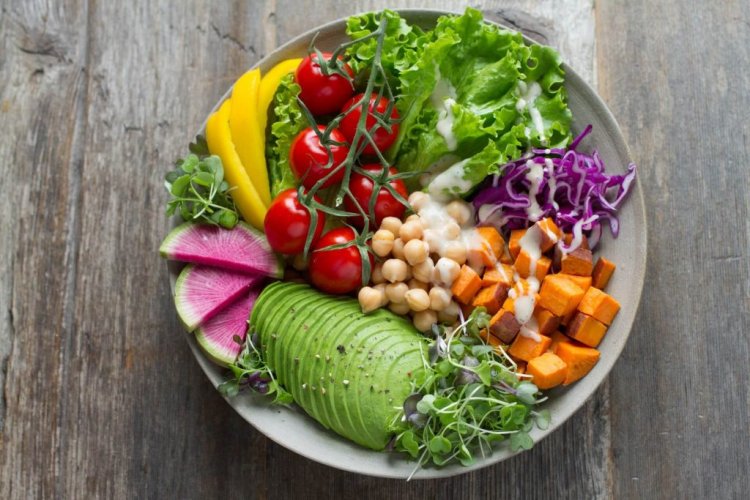Eco Food: A Step-by-Step Guide to Making Sustainable Eating a Part of Your Life
So, You can browse different categories like – Tips and Tutorial about Eco-friendly Products, and also many more.
Share this Post to earn Money ( Upto ₹100 per 1000 Views )

In an era where climate change, environmental degradation, and health concerns dominate the global discourse, our food choices have a larger impact than ever. Eco food, which promotes sustainable eating, has become an essential part of the solution to these issues. Not only does eco food offer benefits to the planet, but it also contributes to better health and a more ethical food system.
But what exactly is eco food, and how can you incorporate it into your daily life? This step-by-step guide will walk you through how to embrace eco food and make sustainable eating a core part of your lifestyle.
What is Eco Food?
Eco food refers to food that is produced, processed, and consumed in ways that are environmentally sustainable, socially responsible, and health-conscious. It emphasizes practices that minimize environmental harm while promoting biodiversity, ethical labor practices, and animal welfare. Key aspects of eco food include:
- Organic Farming: Growing food without synthetic pesticides, herbicides, and fertilizers.
- Local and Seasonal Produce: Consuming food that is grown close to home and in season, reducing the environmental costs associated with transportation and storage.
- Minimizing Food Waste: Buying only what you need, using leftovers efficiently, and composting food scraps.
- Ethically Sourced Products: Supporting producers who prioritize fair wages, humane treatment of animals, and eco-friendly farming methods.
- Sustainable Seafood: Choosing seafood that is harvested in ways that protect fish populations and marine ecosystems.
Eco food is about making conscious choices that benefit both personal health and the planet. Here’s how to start integrating it into your life.
Step 1: Start with Awareness
The first step to adopting eco food practices is awareness—understanding the environmental and ethical impacts of your current food choices. A good starting point is to evaluate your diet, identifying where you can make changes that align with eco-friendly principles. Ask yourself the following questions:
- Where does my food come from?
- Is my produce local or imported from far-off places?
- How much processed food do I consume?
- How much food do I waste weekly?
- Are the animal products I consume sustainably and ethically sourced?
By gaining insight into your habits, you’ll have a clearer idea of where to start making eco-friendly changes.
Step 2: Shop Local and Seasonal
One of the simplest and most impactful ways to adopt eco food is to buy locally grown and seasonal produce. Food that is grown close to home doesn’t need to be transported long distances, which reduces greenhouse gas emissions. Additionally, seasonal produce is fresher, often more nutritious, and typically requires fewer resources to grow, as it thrives in its natural conditions.
How to Do It:
- Visit farmers' markets to support local farmers and find fresh, seasonal produce.
- Join a Community Supported Agriculture (CSA) program where you can receive a box of locally grown food each week.
- Research which fruits and vegetables are in season in your region, and plan your meals around them.
By eating what’s in season, you’re helping to reduce the demand for out-of-season produce that needs to be flown in from far away, cutting your carbon footprint significantly.
Step 3: Embrace Organic Products
Organic farming avoids harmful synthetic chemicals and prioritizes soil health, water conservation, and biodiversity. While organic products can sometimes be more expensive, focusing on organic options for key items like fruits, vegetables, and animal products can help you reduce your exposure to pesticides and promote more sustainable farming practices.
How to Do It:
- Prioritize purchasing organic versions of the "dirty dozen" — a list of the most pesticide-laden produce items (such as strawberries, spinach, and apples).
- Look for organic certifications when buying dairy, eggs, and meat to ensure that animals are raised without hormones or antibiotics and have access to natural environments.
- Buy organic grains and legumes, as these are staple foods that you can integrate into a variety of meals.
Organic farming benefits not only the environment but also your health, as it supports cleaner food production with fewer harmful chemicals.
Step 4: Reduce Meat and Dairy Consumption
Livestock farming is one of the largest contributors to greenhouse gas emissions, water usage, and deforestation. By reducing your consumption of meat and dairy products, you can significantly lower your environmental footprint. Adopting a plant-based diet, or simply eating less meat, is one of the most effective steps you can take to support eco food practices.
How to Do It:
- Start by participating in “Meatless Mondays,” where you opt for plant-based meals at least once a week.
- Experiment with plant-based alternatives, such as tofu, lentils, beans, and tempeh, which are rich in protein and can be easily substituted for meat in most recipes.
- Choose sustainably sourced, grass-fed, or organic meat when you do consume animal products, as these options are better for the environment and for animal welfare.
You don’t have to become a vegetarian or vegan to make a difference. Even small reductions in your meat and dairy intake can help lower your carbon footprint.
Step 5: Minimize Food Waste
Food waste is a major environmental issue. When food is thrown away, not only are the resources used to produce it wasted, but it also contributes to methane emissions when it decomposes in landfills. By being more mindful of your food consumption and waste habits, you can contribute to a more sustainable food system.
How to Do It:
- Plan your meals for the week before shopping to avoid buying unnecessary items.
- Store food properly to extend its shelf life, and make sure to use up leftovers.
- Compost food scraps to keep organic waste out of landfills and return nutrients to the soil.
- Get creative with “imperfect” produce, like bruised fruits or oddly shaped vegetables, which are often thrown away even though they are perfectly edible.
Reducing food waste is one of the easiest and most effective ways to practice eco food principles, and it saves you money at the same time.

Step 6: Choose Sustainable Seafood
Overfishing and unsustainable fishing practices are depleting the world’s oceans and threatening marine ecosystems. Choosing sustainably sourced seafood ensures that you are not contributing to the decline of fish populations or the destruction of aquatic habitats.
How to Do It:
- Look for certifications such as the Marine Stewardship Council (MSC) or the Aquaculture Stewardship Council (ASC), which indicate that seafood is sourced responsibly.
- Avoid eating endangered species, such as certain types of tuna, or seafood that is caught using destructive methods like trawling.
- Consider plant-based seafood alternatives, which are becoming more widely available.
Sustainable seafood is not only better for the environment but also for your health, as it tends to be free from harmful contaminants that are often found in poorly regulated fishing industries.
Step 7: Opt for Fair Trade Products
Fair trade is an eco food principle that ensures that farmers and workers in developing countries are paid fair wages and work in safe conditions. By choosing fair trade products, you’re supporting ethical labor practices and sustainable farming in regions where exploitation is common.
How to Do It:
- Look for the Fair Trade Certified label when purchasing items such as coffee, chocolate, tea, sugar, and bananas.
- Support brands that prioritize social and environmental responsibility by researching their sourcing practices.
- Consider switching to fair trade alternatives for common pantry items, such as coffee or cocoa, which are often produced under exploitative conditions.
Fair trade not only ensures that workers are treated fairly, but it also promotes sustainable farming practices that protect local environments and communities.
Step 8: Grow Your Own Food
One of the most rewarding ways to embrace eco food is by growing your own fruits, vegetables, and herbs. Gardening allows you to control how your food is grown, ensuring that it’s free from chemicals and grown sustainably.
How to Do It:
- Start with a small herb garden or a few potted plants on your balcony or windowsill.
- If you have more space, consider starting a vegetable garden to grow your own seasonal produce.
- Use organic methods, such as composting and natural pest control, to ensure that your garden is eco-friendly.
Growing your own food reduces your reliance on industrial agriculture, lowers your carbon footprint, and provides you with fresh, nutritious produce right at home.
Step 9: Support Sustainable Brands
Incorporating eco food into your life also means supporting companies that prioritize sustainability, transparency, and ethical sourcing. Many brands are now focusing on reducing their environmental impact and offering products that align with eco food values.
How to Do It:
- Research brands and retailers to see which ones prioritize sustainable practices, such as reducing plastic packaging, using renewable energy, or sourcing organic ingredients.
- Choose products from companies that are committed to reducing their environmental impact, even if they come at a slightly higher price.
- Support local food producers and small businesses that use eco-friendly practices.
By supporting companies that align with eco food values, you’re helping to shift the market towards more sustainable practices.
Conclusion: A Greener, Healthier Future with Eco Food
Eco food is more than just a trend; it’s a movement toward a more sustainable and ethical way of living. By making small, manageable changes to how you source, prepare, and consume food, you can have a significant positive impact on both your health and the environment.
From choosing organic and local produce to reducing food waste and supporting fair trade, each step you take brings you closer to a greener, healthier lifestyle. By incorporating eco food into your daily routine, you’re not only nourishing yourself but also contributing to the preservation of our planet for future generations. So, take the first step today, and start making eco food a part of your life.














